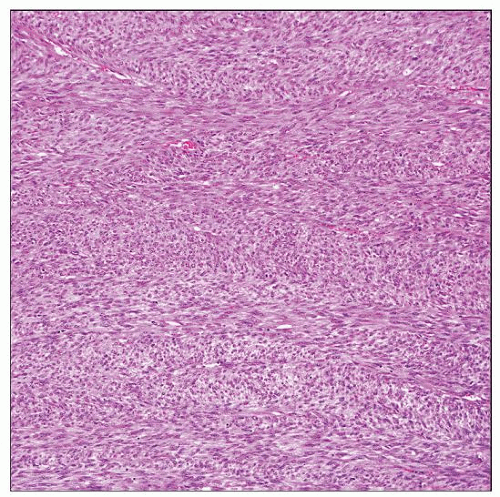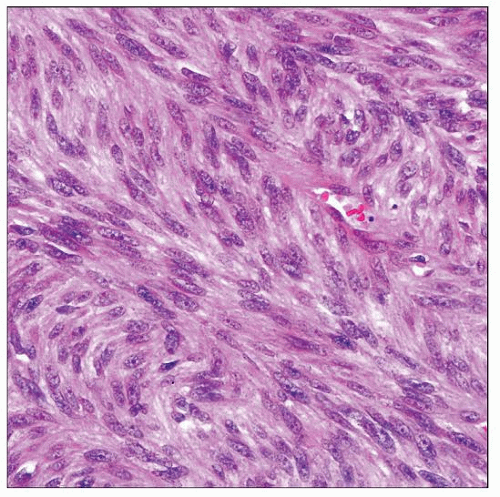Fibrosarcoma
Cyril Fisher, MD, DSc, FRCPath
Key Facts
Terminology
Soft tissue sarcoma composed of fibroblasts
Lacks features of specific types of fibrosarcoma
Etiology/Pathogenesis
Exceptionally rare if strictly defined
Microscopic Pathology
Fascicular architecture
Characteristic “herringbone” or “chevron” pattern
Elongated spindle cells; slender, tapered, sometimes wavy nuclei
Scanty cytoplasm
Ancillary Tests
Most cases negative for all immunohistochemical markers except vimentin
Some express CD34 focally or diffusely
Some superficial examples have COL1A1-PDGFB fusion transcripts as in dermatofibrosarcoma
 Low magnification shows a typically cellular low-grade fibrosarcoma with uniform spindle cells arranged in long intersecting fascicles in a so-called herringbone pattern. No necrosis is seen. |
TERMINOLOGY
Definitions
Soft tissue sarcoma of adults composed of fibroblasts
Lacks features of specific fibrosarcoma subtypes, which may be found in dermis/subcutis
Low-grade fibromyxoid sarcoma
Myxofibrosarcoma
Infantile fibrosarcoma
Has t(12;15)(p13;q26) with ETV6-NTRK3 fusion
Now very rare; mostly a diagnosis of exclusion
Pleomorphic variants are currently classified as undifferentiated sarcoma/malignant fibrous histiocytoma
Conclusive diagnosis can require electron microscopy
ETIOLOGY/PATHOGENESIS
De Novo
Exceptionally rare if strictly defined
Arising in Association with Other Tumors
Fibrosarcoma in dermatofibrosarcoma protuberans (DFSP)
Probable origin of many dermal or subcutaneous adult fibrosarcomas
Malignant solitary fibrous tumor
Stay updated, free articles. Join our Telegram channel

Full access? Get Clinical Tree



